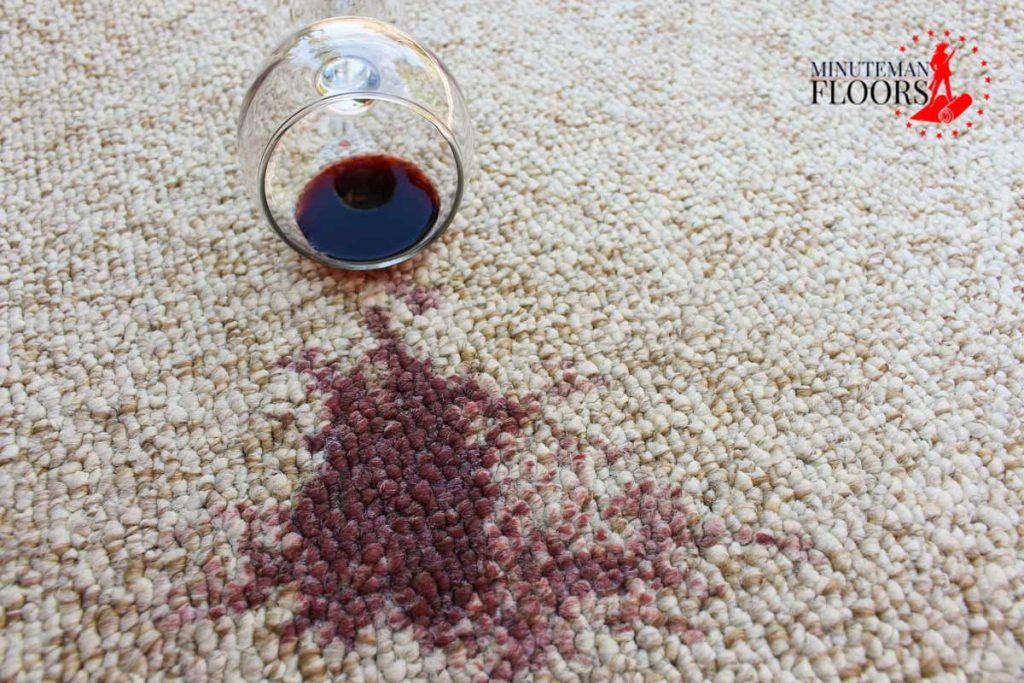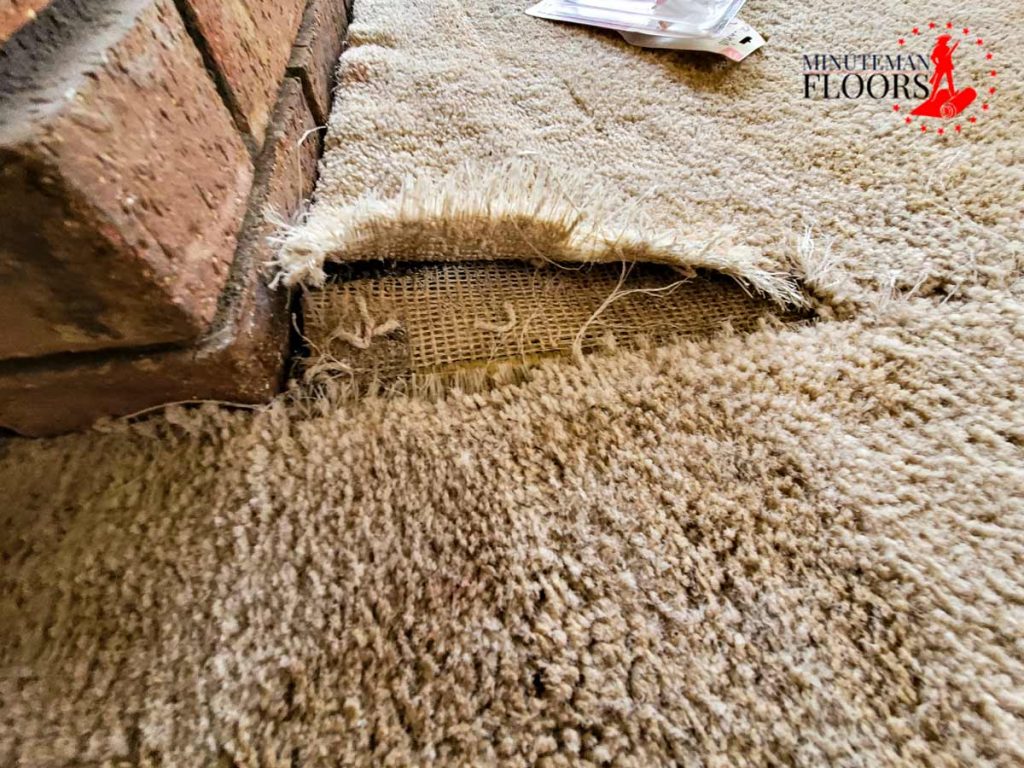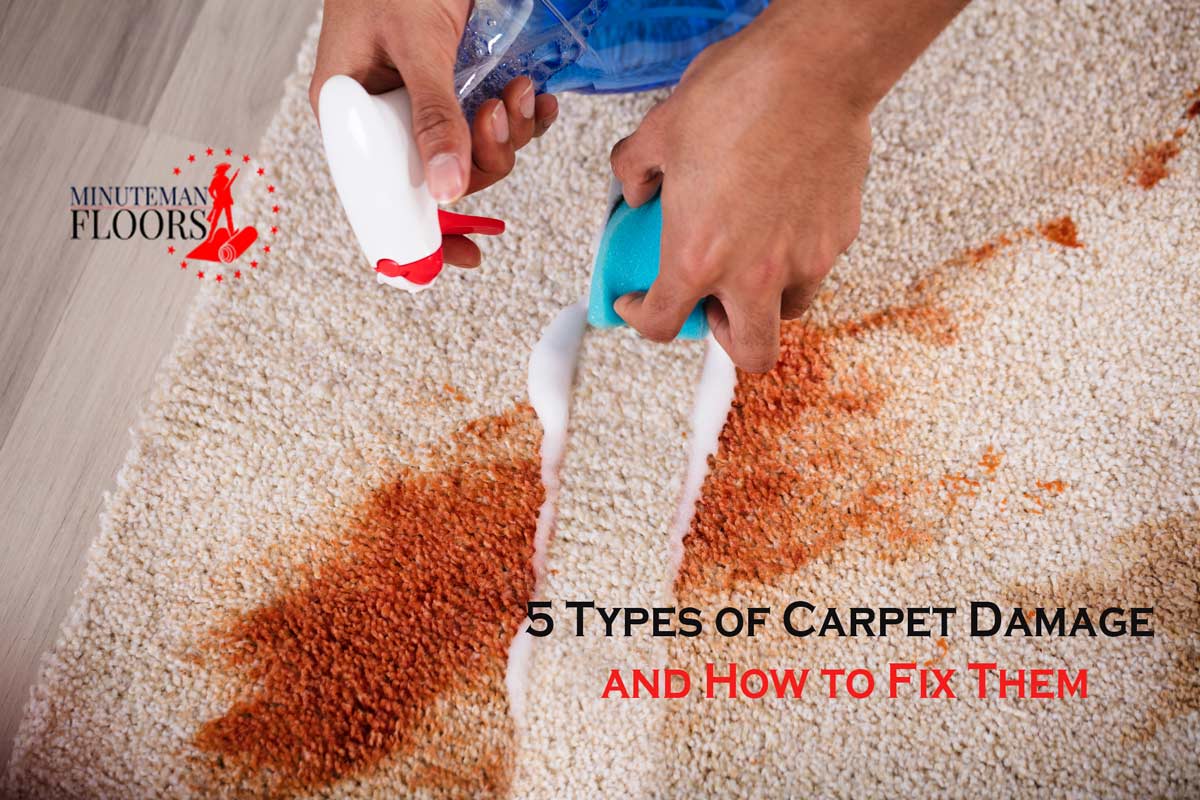Carpet is one of the most popular flooring materials that brings warmth and comfort to any place. But, unfortunately, over time or by some mishaps, it can get damaged. Knowing about different types of carpet damage and DIY methods to fix them can help you extend the lifespan of your carpets.
Here, we have put together a guide about common carpet damage issues, tips to prevent them, and how to fix them by yourself.
Do you need carpets? You don’t even have to leave
your place, we’ll bring the whole carpet store to you in Manchester,
NH.
Call for more
information.
5 Common Types of Carpet Damage and DIY Carpet Repair Techniques
Carpeting is a common type of flooring that is easy to install, more affordable than many natural flooring materials (such as hardwood and stone), and makes your place cozy and safe. Besides, carpets also offer versatility in design.
However, they can get damaged relatively easily if not taken care of properly. So, if you’re enjoying the benefits of a carpeted floor, you should also know about the types of carpet damage and how you can fix them.
Stains on Carpets; Acting Quickly Is the Key
It’s perhaps the most common carpet issue, especially in households with kids and pets. Spills, pet accidents, and any other substance can create an ugly sight in the middle of your floor. But, if you’re quick enough, you can get rid of it before it becomes a big problem.
The first thing to do is use a cloth (even a paper towel) to blot the stain and absorb the liquid as much as possible. This prevents the stain from spreading into the fibers. But you should just tap the cloth and press it gently to absorb the liquid, never rub it.
Then, to remove the stain completely, you should use any of the solutions below depending on what caused the stain.
Food and Beverage Stains on the Carpet

For stains caused by food and drinks, after blotting it, make a mild solution with dish soap and warm water. Use just a little of the solution on the stain to remove it, but don’t rub. Then, use a clean wet cloth to rinse it. Finally, dry the area as much as possible with a clean dry cloth.
Pet Stains on Carpet
Pet accidents can not only ruin the carpet but also cause a bad smell. So, after removing the solid waste and blotting the liquid quickly, combine vinegar and water (equal parts) and gently apply it to the stain to clean it. Then rinse it with a wet cloth and finally blot dry.
Fresh and Dry Blood Stains on Carpets
Blood is another common stain, especially in the kitchen. After blotting, use cold water and mix it with a mild detergent. Apply it gently on the edges of the stain and work your way to the center little by little. Then, use a wet cloth (with cold water) to rinse it and then blot dry.
However, if the blood stain is dry, it’s better to mix cold water with enzyme-based laundry detergent to make a paste. Then leave it on the stain for 20 minutes.
Removing Oil and Grease Stains from Carpet
One of the most challenging stains to remove from carpets is oil and grease stains. After blotting the oil, you should sprinkle baking soda (or cornstarch) on the stain to absorb the rest of it. Leave it for 20 minutes and then vacuum the powder.
If the stain hasn’t come off yet, apply a little grease-fighting dish detergent with a soft brush. Then rinse and blot dry.
Ink Stains on Carpets
For households with kids, ink stains are a big issue. They’re also stubborn and not easily removed. You should blot the stain with alcohol (rubbing alcohol or isopropyl alcohol), not water. If you rub it, you’ll have a bigger problem on your hand, so never rub it. After the ink is transferred to the alcohol-dampened cloth, it’s time to rinse it with a clean wet cloth (with plain water, not alcohol) and blot dry it.
Overall, if you can promptly deal with the spill, you have a good chance of removing it with the right method. But, except for the type of stain, the type of carpet can play a big role as well. For example, some carpets are treated with stain-resistant coatings which make it easier for you to remove any stain.
Anyway, if the stain is too stubborn and doesn’t come off, a professional carpet cleaner can help you restore the beauty of your floor.
Carpet Burns; Techniques to Fix Them at Home
Carpet fibers are usually sensitive to heat. So, any contact with flames and hot objects, such as a hot frying pan, hair curler, and ember from a fireplace, can cause minor or large carpet burns.
To fix small burns, you just need a pair of small scissors to trim the charred fibers. Don’t cut the undamaged part of the fibers. Then, if it’s visible, you can blend it with the surrounding fibers by gently rubbing or brushing it.
For more severe burns, where there’s a tiny hole in the carpet, you can use carpet repair adhesives to bond it back together. First, you should clean the area and trim the charred fibers. Next, use a toothpick to carefully apply the adhesive on the edges of the hole. Then press it and let it dry. These adhesives usually come with instructions, so follow them.
And for large burns, you need a piece of matching carpet to replace the area with a patch. If you can’t find a matching carpet in stores, you can take it from a discrete and inconspicuous area, such as the closet.
First, you should cut the area into a perfect square or rectangle. Then cut out the patch to perfectly fit the area. If your carpet is patterned, try to use a piece that matches the pattern. Also, it’s important to match the direction of the fibers for a perfect blend.
Bond the patch and the carpet by applying carpet seam adhesive on the edges of the patch and press it. If necessary, you can trim the patch to blend it with the rest of the carpet.
Repairing Carpet Snags
Carpet snag means when there’s a loose thread that is unraveling the carpet. Aside from damaging the integrity of the carpet and getting bigger and bigger, they can be unsafe as one might trip over them. So, you should fix a carpet snag immediately.
To repair a pull, just use a pair of small scissors to cut the excess fiber to the same level as the other fibers. Then, blend the area very gently by rubbing it or with a brush.
However, if the snag is a significant one that is unraveling the carpet, you should get a carpet repair kit. With the adhesive and the carpet needle of the kit, you can secure the loose fiber back in place. These kits come with instructions and you should follow them for a perfect repair.
Repairing Rips in Carpets

One of the challenging types of carpet damage to fix by yourself is carpet rips. Sometimes a sharp object, dragging heavy furniture, and any other excessive force can cause a rip. If it’s not too severe, you can do it at home.
For a small rip, you should first trim the loose fibers carefully, then use a piece of heavy-duty carpet tape under the carpet, exactly underneath the damaged area. Make sure it’s big enough to cover the whole rip. Hold the edges of the rip together and press it on the tape.
If you think the tape isn’t enough, after that you can also apply a bit of carpet adhesive underneath the edges of the rip and then press the edges onto the adhesive. Make sure you’re holding the edges together until it dries.
Sometimes the rip is a bit bigger and you have to patch it. For this, follow the instructions we discussed above for patching large carpet burns.
Restoring Matted Carpet
This is one of the common types of carpet damage in high-traffic areas where the fibers become flattened. It might not be possible to recover the original beauty and texture, but you can still improve it to some degree.
First, vacuum the carpet thoroughly. Then use a brush, preferably a stiff-bristled one, or a carpet rake to lift the flattened fibers. Brush it in the opposite direction to the carpet fibers direction. You can even spray a carpet pile reviver before brushing to enhance the lifting of the compressed fibers.
If that’s not enough, steam cleaning the carpet can help the fibers to bounce back a bit more. But you should dry the carpet after it to avoid carpet damage from water/moisture.
To sum up, various types of carpet damage can be repaired at home with the right technique. But if you’re not sure you can do it, we strongly recommend using professional carpet damage restoration services.
Although mishaps and damage are unavoidable, you should try your best to prevent them. Below, we’ll give you some tips.
Carpet Damage Prevention Tips
To lower the risk of various types of carpet damage, consider these guidelines.
- Regular cleaning and maintenance are key to keeping the carpet in good shape.
- Professional deep cleaning once a year is important for the longevity of the carpet.
- Clean up the spills immediately and properly (as discussed above in the stains section).
- Try not to walk on the carpet with shoes.
- Protect the carpet in high-traffic areas with a mat or area rug.
- Pet owners should be aware of carpet damage due to pets. For example, it’s better to choose stain-resistant carpets and trim their nails to prevent snags.
- Use furniture pads.
- Never place sharp objects on the carpet.
- It’s a good idea to rotate the carpet once in a while.
- Don’t hesitate to immediately get professional help to address the carpet damage that you can’t repair at home.
Looking for carpets? Call for a quote.
FAQs about Carpet Damage Causes and How to Repair It
How to fix carpet damage is a big concern of our clients. Here are some of your FAQs.
How Can I Fix Carpet Damage from Water/Moisture?
First, you need to remove the water as quickly as possible. Fans and dehumidifiers can speed up the process. Then, mix warm water with white vinegar or a mild detergent to disinfect the carpet and prevent mold and mildew growth. Finally, dry the carpet completely before using it again.
How Can I Fix Carpet Wrinkles?
Carpet wrinkles and buckling happen due to problems with installation, carpet padding, or fluctuations in humidity and temperature. To fix the issue, first find out what’s causing it. Then, the carpet should be re-stretched and reattached. Usually, a professional carpet installer can do it.
What Type of Carpet Can Resist Stains Better?
Triexta carpet is a combination of nylon and polyester that offers exceptional resistance to stains, besides softness and durability.
High-Quality Carpets, Runners, and Installation Services in Manchester, New Hampshire
Now that you learned about types of carpet damage and the right DIY carpet damage repair methods, you can decide if the carpet has still a few years of use left or if it’s time to get a new one.
Minuteman Floors in Manchester, NH offers different types of quality carpets in various colors and patterns. If you want to install carpet flooring or runners, you can simply call us and we’ll bring all the samples to your place to see the materials and the colors in your own place and choose the one that goes best with the style and décor.
You can also consult with our flooring experts to make the right decision. So, pick up your phone and call 603-782-1942 to schedule an appointment.

